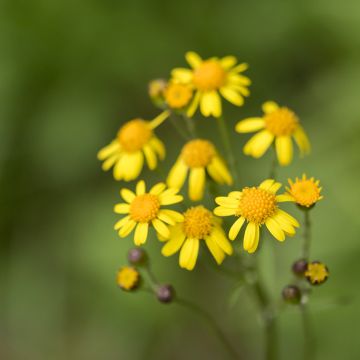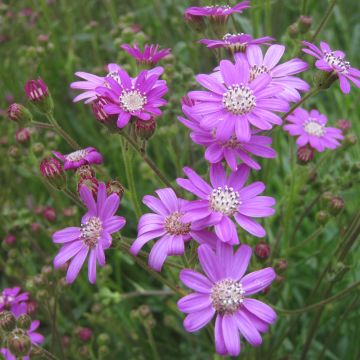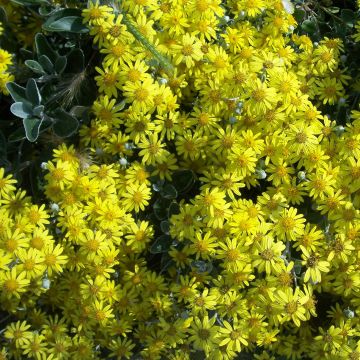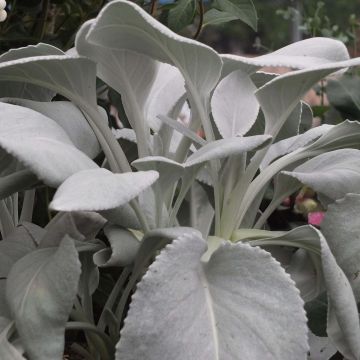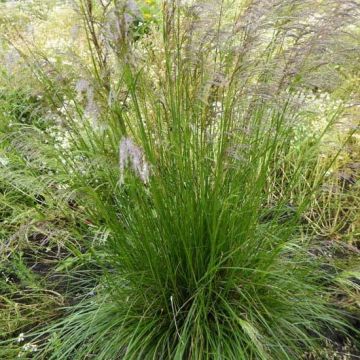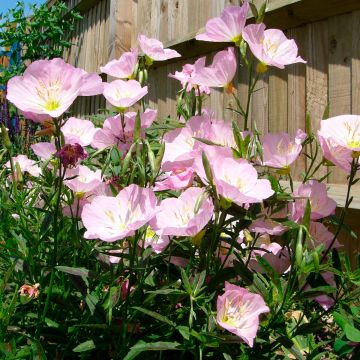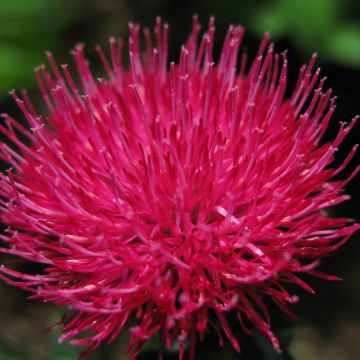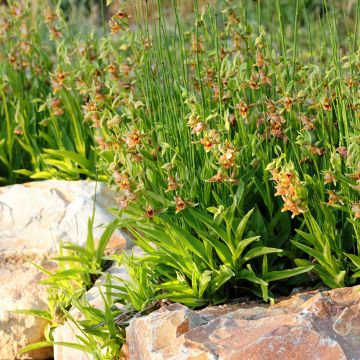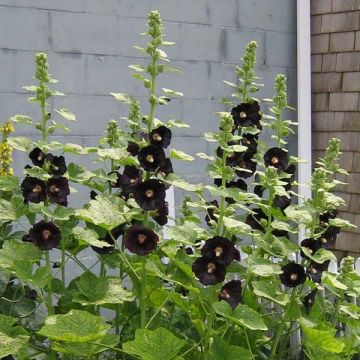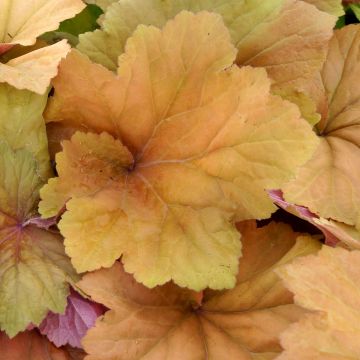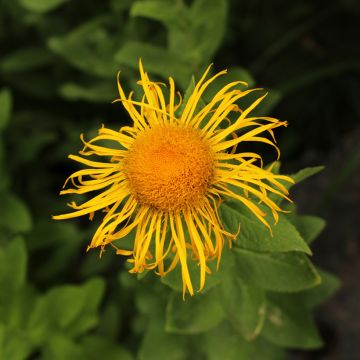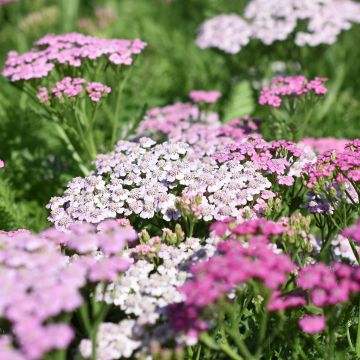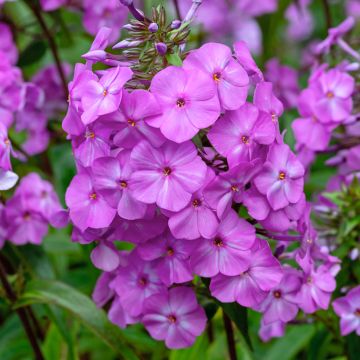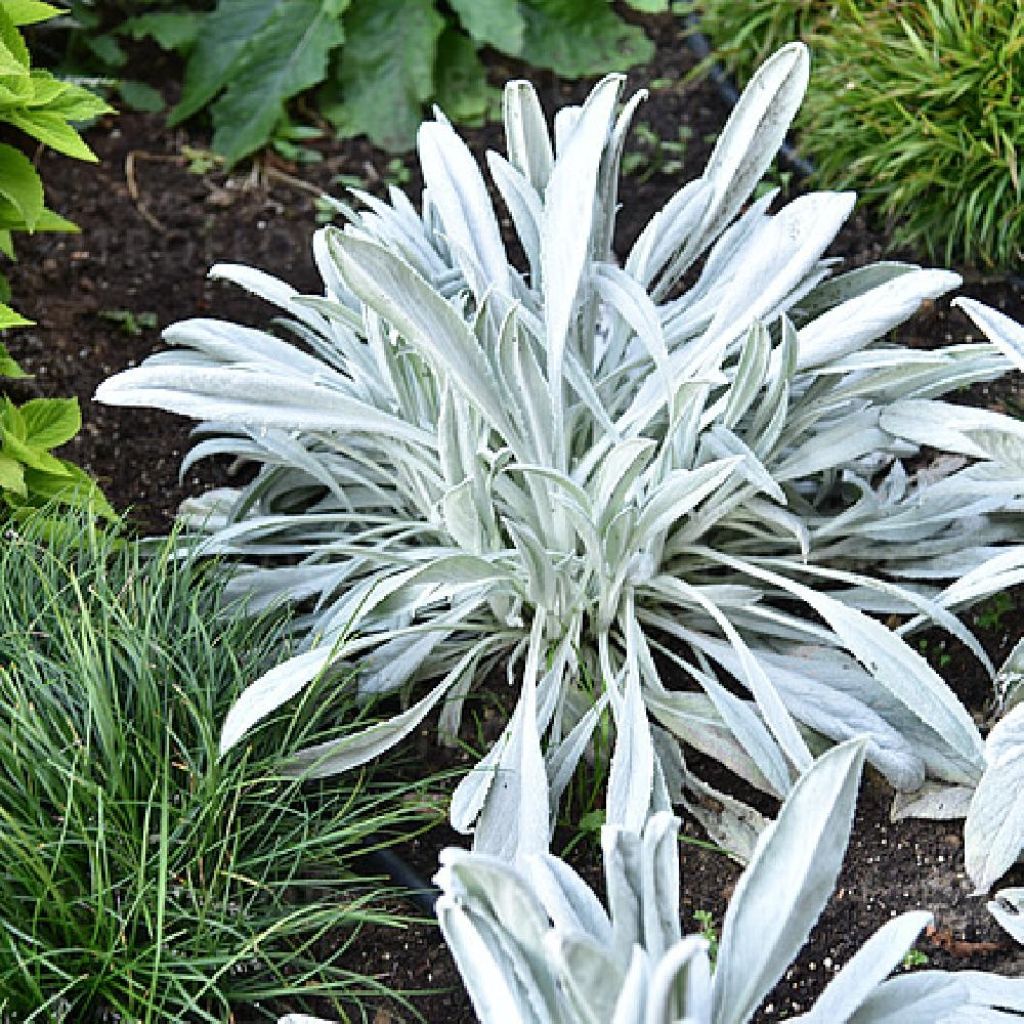

Senecio Donkeys Ears
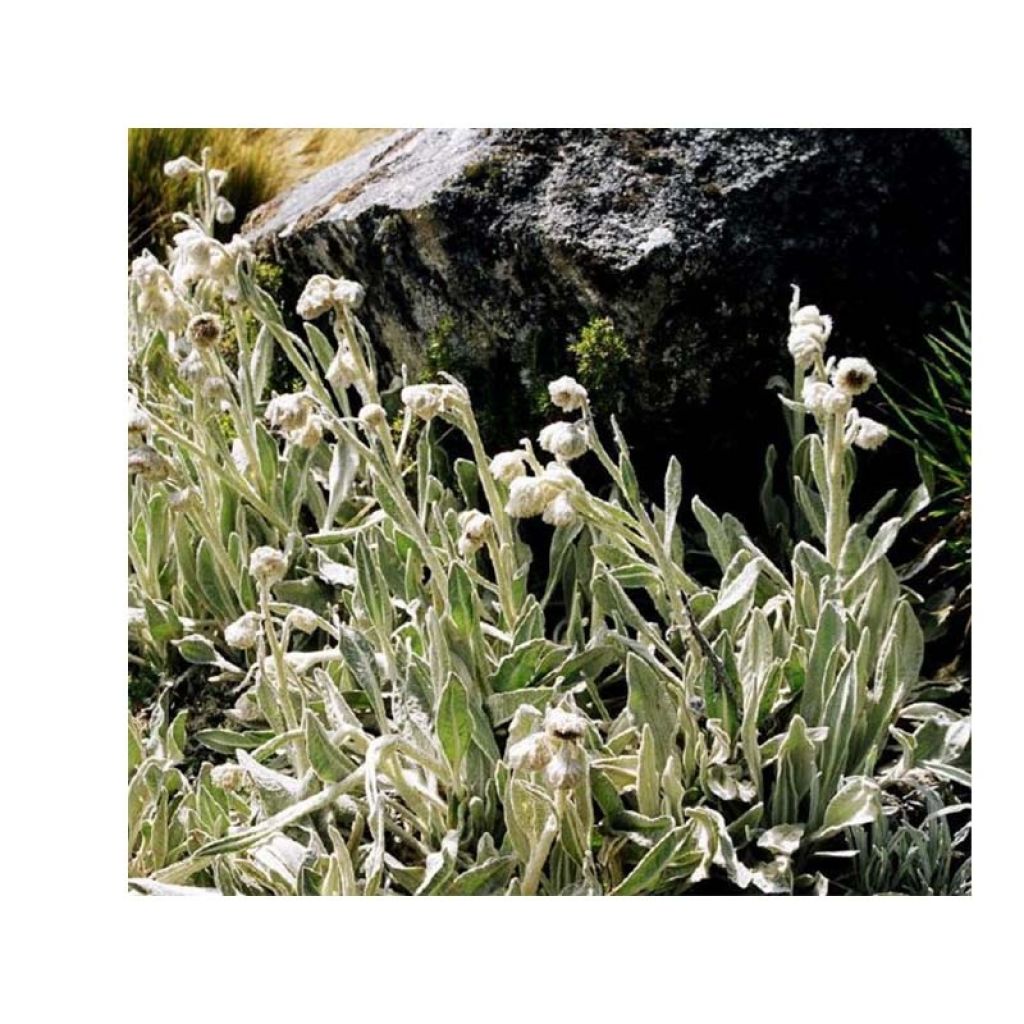

Senecio Donkey's Ears - Cinéraire
Senecio Donkeys Ears
Senecio Donkey's Ears
Ragwort, Groundsel
This item cannot be shipped to the selected country
Delivery charge from €5.90
More information
Schedule delivery date,
and select date in basket
This plant carries a 12 months recovery warranty
More information
We guarantee the quality of our plants for a full growing cycle, and will replace at our expense any plant that fails to recover under normal climatic and planting conditions.
From €5.90 for pickup delivery and €6.90 for home delivery
Express home delivery from €8.90.
Does this plant fit my garden?
Set up your Plantfit profile →
Description
Senecio 'Donkey's Ears' is a sculptural cineraria, with long, narrow silver leaves. It is well-branched, so does not need pinching to increase density. This hardy variety is undemanding and thrives in full sun or partial shade, in well-drained, even poor and rather dry soil. It is evergreen, providing a beautiful presence all year round in your flower beds and pots.
Cinerarias belong to the Asteraceae family. They are classics in bedding displays, bringing light and texture with their bright silver, thick and furry foliage. It is the hairs on the surface of the leaves that produce this spectacular effect. However, they are quite tender and best reserved for mild climates or coastal areas as they tolerate wind, salt spray, and occasional drought very well.
The 'Donkey's Ears' variety is the result of various cross-breeding that has led to an exceptional plant. It produces long and narrow silver leaves, without teeth or lobes, which were not found in other hybrids until now. It forms vigorous, dense and impenetrable ground cover, branching from the base, about 35 cm (14in) high and 40 to 50 cm (16 to 20in) wide. 'Donkey's Ears' produces very few, if any, flowers increasing its vigour, and it seems a little hardier than its counterparts, withstanding at least -12°C (10.4°F) in a well-drained soil.
Senecio 'Donkey's Ears' needs close to neutral, rather poor, dry and sandy soil. It likes the sun but will tolerate bright partial shade. If the soil is too rich, the plant will thin out, its lifespan will be reduced, and its leaves will be greener. The worst enemy of cineraria is stagnant water, which would cause the thick crown to rot. Therefore, ensure good drainage by placing it on a slope that allows rainwater to be drained away, for example. This variety branches out from the base without the frequent pinching which is often required for taller and less dense varieties.
This cineraria will be stunning in pots, and beautiful with other silver plants like Italian everlasting, Marrubium incanum, or umbellate yarrow. In a dry garden, it can provide contrast to its architectural neighbours like giant sea holly, ovate-leaved agave, or Mexican lily.
Report an error about the product description
Flowering
Foliage
Plant habit
Botanical data
Senecio
Donkey's Ears
Asteraceae
Ragwort, Groundsel
Cultivar or hybrid
Other Senecio
Planting and care
Senecio Donkey's Ears is an authentic Mediterranean coastal plant, not very hardy but very tolerant of spray, salty soils, and summer drought. It is an excellent coastal plant. It is hardy from -7/-10°C (19.4/14°F) in well-drained soil that does not retain water in winter, if sheltered from cold, dry winds. Plant it in light soil, even limestone and dry in summer. Once established, this plant does not need watering in summer. In heavy soil, it is essential to incorporate good draining materials such as gravel and compost to protect the crown from moisture. This plant will not survive in waterlogged or overly moist soil in winter, but it is very tolerant concerning exposure. In less sunny regions, choose a very bright location. A semi-shaded, or even shaded position in warmer climates will be fine. It may not flower in the shade, but this variety is primarily grown for its foliage and removing the flowers promotes the production of new, highly ornamental leaves, and extends the plant's lifespan.
It will be happy growing in pots (with drainage holes) in a well-draining mixture composed of compost, coarse sand, and a bit of garden soil. Create a drainage layer (clay balls, pottery shards, stones) at the bottom of the pot. Regularly water but allow your mixture to dry out a bit in between so that the roots are not constantly submerged in moisture. Do not place a saucer under the pot, for the same reason.
Planting period
Intended location
Care
This item has not been reviewed yet - be the first to leave a review about it.
Summer flowering perennials
Haven't found what you were looking for?
Hardiness is the lowest winter temperature a plant can endure without suffering serious damage or even dying. However, hardiness is affected by location (a sheltered area, such as a patio), protection (winter cover) and soil type (hardiness is improved by well-drained soil).

Photo Sharing Terms & Conditions
In order to encourage gardeners to interact and share their experiences, Promesse de fleurs offers various media enabling content to be uploaded onto its Site - in particular via the ‘Photo sharing’ module.
The User agrees to refrain from:
- Posting any content that is illegal, prejudicial, insulting, racist, inciteful to hatred, revisionist, contrary to public decency, that infringes on privacy or on the privacy rights of third parties, in particular the publicity rights of persons and goods, intellectual property rights, or the right to privacy.
- Submitting content on behalf of a third party;
- Impersonate the identity of a third party and/or publish any personal information about a third party;
In general, the User undertakes to refrain from any unethical behaviour.
All Content (in particular text, comments, files, images, photos, videos, creative works, etc.), which may be subject to property or intellectual property rights, image or other private rights, shall remain the property of the User, subject to the limited rights granted by the terms of the licence granted by Promesse de fleurs as stated below. Users are at liberty to publish or not to publish such Content on the Site, notably via the ‘Photo Sharing’ facility, and accept that this Content shall be made public and freely accessible, notably on the Internet.
Users further acknowledge, undertake to have ,and guarantee that they hold all necessary rights and permissions to publish such material on the Site, in particular with regard to the legislation in force pertaining to any privacy, property, intellectual property, image, or contractual rights, or rights of any other nature. By publishing such Content on the Site, Users acknowledge accepting full liability as publishers of the Content within the meaning of the law, and grant Promesse de fleurs, free of charge, an inclusive, worldwide licence for the said Content for the entire duration of its publication, including all reproduction, representation, up/downloading, displaying, performing, transmission, and storage rights.
Users also grant permission for their name to be linked to the Content and accept that this link may not always be made available.
By engaging in posting material, Users consent to their Content becoming automatically accessible on the Internet, in particular on other sites and/or blogs and/or web pages of the Promesse de fleurs site, including in particular social pages and the Promesse de fleurs catalogue.
Users may secure the removal of entrusted content free of charge by issuing a simple request via our contact form.
The flowering period indicated on our website applies to countries and regions located in USDA zone 8 (France, the United Kingdom, Ireland, the Netherlands, etc.)
It will vary according to where you live:
- In zones 9 to 10 (Italy, Spain, Greece, etc.), flowering will occur about 2 to 4 weeks earlier.
- In zones 6 to 7 (Germany, Poland, Slovenia, and lower mountainous regions), flowering will be delayed by 2 to 3 weeks.
- In zone 5 (Central Europe, Scandinavia), blooming will be delayed by 3 to 5 weeks.
In temperate climates, pruning of spring-flowering shrubs (forsythia, spireas, etc.) should be done just after flowering.
Pruning of summer-flowering shrubs (Indian Lilac, Perovskia, etc.) can be done in winter or spring.
In cold regions as well as with frost-sensitive plants, avoid pruning too early when severe frosts may still occur.
The planting period indicated on our website applies to countries and regions located in USDA zone 8 (France, United Kingdom, Ireland, Netherlands).
It will vary according to where you live:
- In Mediterranean zones (Marseille, Madrid, Milan, etc.), autumn and winter are the best planting periods.
- In continental zones (Strasbourg, Munich, Vienna, etc.), delay planting by 2 to 3 weeks in spring and bring it forward by 2 to 4 weeks in autumn.
- In mountainous regions (the Alps, Pyrenees, Carpathians, etc.), it is best to plant in late spring (May-June) or late summer (August-September).
The harvesting period indicated on our website applies to countries and regions in USDA zone 8 (France, England, Ireland, the Netherlands).
In colder areas (Scandinavia, Poland, Austria...) fruit and vegetable harvests are likely to be delayed by 3-4 weeks.
In warmer areas (Italy, Spain, Greece, etc.), harvesting will probably take place earlier, depending on weather conditions.
The sowing periods indicated on our website apply to countries and regions within USDA Zone 8 (France, UK, Ireland, Netherlands).
In colder areas (Scandinavia, Poland, Austria...), delay any outdoor sowing by 3-4 weeks, or sow under glass.
In warmer climes (Italy, Spain, Greece, etc.), bring outdoor sowing forward by a few weeks.

































